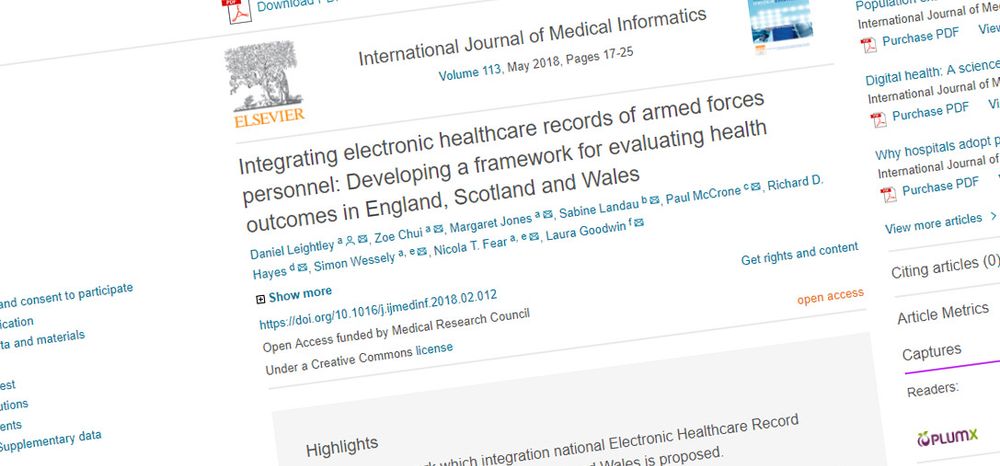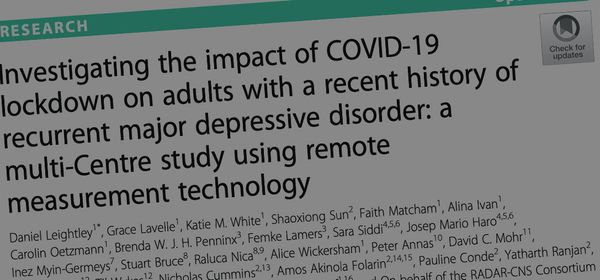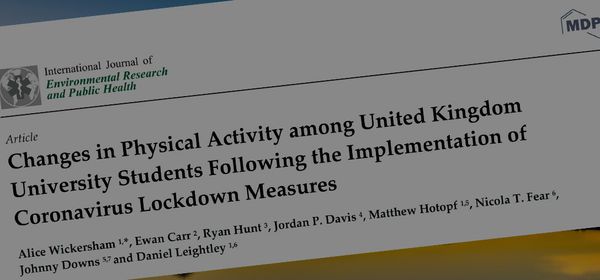Integrating electronic healthcare records of armed forces personnel: Developing a framework for evaluating health outcomes in England, Scotland and Wales
Good news, we've recently published an Economic and Social Research Council funded study which looked at developing and describing a method which integrates the Electronic Healthcare Records (EHRs) of Armed Forces personnel in England, Scotland and Wales based on variable commonality to produce a multi-nation dataset of secondary health care.
EHRs are created to capture summaries of care and contact made to healthcare services. EHRs offer a means to analyse admissions to hospitals for epidemiological research. In the United Kingdom, England, Scotland and Wales maintain separate data stores, which are administered and managed exclusively by devolved Government. This independence results in harmonisation challenges, not least lack of uniformity, making it difficult to evaluate care, diagnoses and treatment across the UK.
We employed a method which used an Armed Forces cohort to extract and integrate three EHR datasets, using commonality as the linkage point. This was achieved by evaluating and combining variables which shared the same characteristics. EHRs representing Accident and Emergency (A&E), Admitted Patient Care (APC) and Outpatient care were combined to create a patient-level history spanning three nations. Patient-level EHRs were examined to ascertain admission differences, common diagnoses and record completeness.
A total of 6,336 Armed Forces personnel were matched, of which 5,460 personnel had 7,510 A&E visits, 9,316 APC episodes and 45,005 Outpatient appointments. We observed full completeness for diagnoses in APC, whereas Outpatient admissions were sparsely coded; with 88% of diagnoses coded as “Unknown/unspecified cause of morbidity”. In addition, A&E records were sporadically coded; we found five coding systems for identifying reason for admission.
At present, EHRs are designed to monitor the cost of treatment, enable administrative oversight, and are not currently suited to epidemiological research. However, only small changes may be needed to take advantage of what should be a highly cost-effective means of delivering important research for the benefit of the NHS.
You can read the article here.
Length of time in review
I submitted the manuscript via Elsevier Manuscript Submission Centre on the 7th June 2017, on the 31st August 2017 I received the first notification - revise and resubmit. The Reviewers made many valuable supportive comments about the manuscript. I addressed all concerns and re-submitted the manuscript on 16th October 2017 and received final notification on the 13th February 2018! From first submission to final acceptance was 252 days. If I remove the time taken to revise, it is 207 days. From acceptance to appearing online took 11 days!



